SPHAGNETICOLA
Sphagneticola
O. Hoffm., Notizbl. Konigl. Bot. Gart. Berlin 3: 36. 1900; Fl. China @ eFloras.org 20-21: 870; Hyatt, Fl. North Amer. @ eFloras.org 19-21: 126.
Perennial herb, woody, subfleshy. Stem prostrate, branched +/- throughout, often rooting at nodes. Leaves opposite, shortly petiolate or sessile, blade often 3-lobed, margins entire or toothed, faces usually scabrous. Capitula solitary, terminal, often appearing axillary because of sympodial growth, long pedunculate, radiate, heterogamous. Involucre broadly campanulate or obconic, phyllaries persistent, in 2-3 series; outer phyllaries 3-5, herbaceous, often longer than inner, apices reflexed; inner phyllaries 10-12, thinly herbaceous or scarious; receptacle convex to conical, paleate, paleae persistent, scarious, conduplicate about ray cypselae. Ray florets: 4-10+, 1 or 2-seriate, female, fertile. Corolla orange to yellow, tube short, limb oblong, apices 3-lobed. Disc florets: Numerous (30-60+), bisexual, fertile. Corolla yellow to orange, tubular, tubes shorter than campanulate throats, 5-lobed, lobes lance- triangular with hair-like papillae along inner margin. Anther thecae and appendages blackish with scattered glandular dots. Cypselae body smooth to roughened or tuberculate, blackish; ray cypselae triangular, disc cypselae compressed, margin sometimes obscurely winged, apex shortly rostrate with a corona of erose to fimbrillate pappus setae; Pappi sometimes absent.
4 species
Sphagneticola trilobata
Sphagneticola trilobata
(L.) Pruski, Mem. New York Bot. Gard. 78: 114. 1996; Fl. China @ eFloras.org 20-21: 870; Hyatt, Fl. North Amer. @ eFloras.org 21: 126; keralaplants.in; Acmella spilanthoides Cass., Dict. Sci. Nat., ed. 2. 24: 329. 1822; Silphium trilobatum L., Syst. Nat. ed. 10,2: 1233. 1759; Wedelia trilobata (L.) Hitchc., Rep. (Annual) Missouri Bot. Gard. 4: 99. 1893; W. paludosa DC., Prodr. 5: 538. 1836.
Perennial herb, creeping or decumbent. Stem stout, pubescent, quadrangular, branched throughout, often rooting at nodes. Leaves opposite, somewhat succulent; petiole up to 5(-8) mm long, pubescent; leaf blade 5-9 cm x 3-5.5 cm, oblanceolate, rhombic or elliptic with 3 triangular lobes, margin serrate, base attenuated, apex acute, both surfaces pubescent or scabridulous. Capitula 2.5-4 cm across, radiate, heterogamous, solitary, terminal, often appearing axillary because of sympodial growth, on long, pubescent appressed peduncle up to 12 cm long. Involucre broadly campanulate. Phyllaries 10+, unequal, persistent, in 2-3 series, oblanceolate or oblong; outer phyllaries usually 5, 11-14 mm x 5-9 mm, green, more foliaceous, pubescent on outside and at margin (ciliate), midvein prominent, veins obscure; inner phyllaries slightly or conspicuously shorter, narrower, thin, green-white or white. Receptacle conical, paleate, paleae conduplicate, persistent. Ray florets: 10-13, 2-seriate, female, fertile. Corollas ca. 12-15 mm x 4-6 mm; tube ca. 2 mm long, sparsely pubescent; limb yellow, elliptic-oblong, apex 3-lobed, lobes unequal, middle shorter, obtuse. Ovary inferior, ca. 2 mm long; style 3 mm long, bifid. Disc florets: Many, 8-10(-12) mm long, bisexual, paleate, paleae ca. 7-9 mm long, lanceolate, +/- membranous, apex ciliate. Corolla 5-6 mm long, yellow, tubular; tube much shorter than tubular-funnelform throat, lobes 5, ca. 1 mm long, triangular with long dense hair-like papillae on inner side near margin. Ovary ca. 2.5 mm long, +/- clavate, puberulent; style ca. 5 mm long, bifid, branches curved, hairy near apex. Pappus in both ray and disc florets coroniform of fused, unequal, fimbriate, scales, ca. 1 mm long, 1 or 2 scales long and subulate.
Cypselae blackish, clavate, angled, ca. 5 mm; pappus of fused scales, coroniform. (Mature cypselae not observed)
Common Names: Wedelia, Yellow Dots, Creeping Daisy, Singapore Daisy, Trailing Daisy, Bay Biscayne Creeping- Oxeye, Creeping ox-eye, Rabbit’s Paw
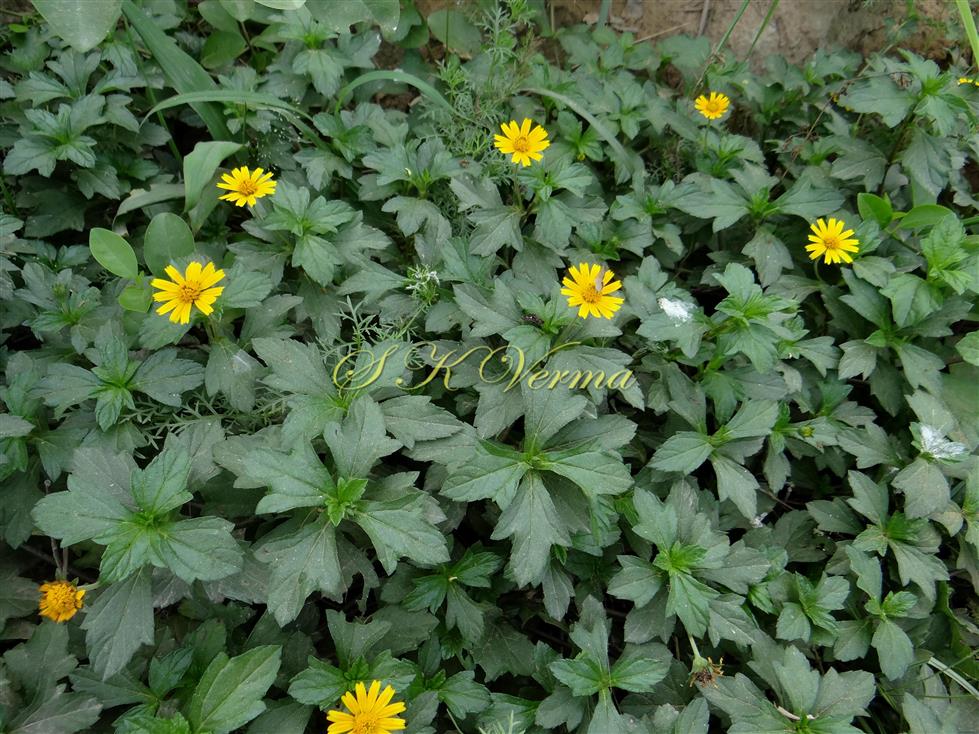
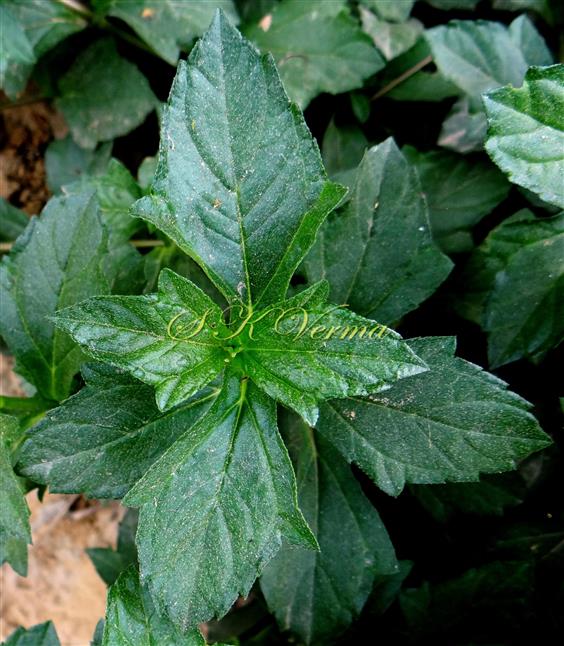
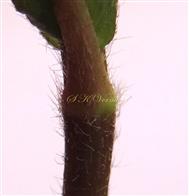
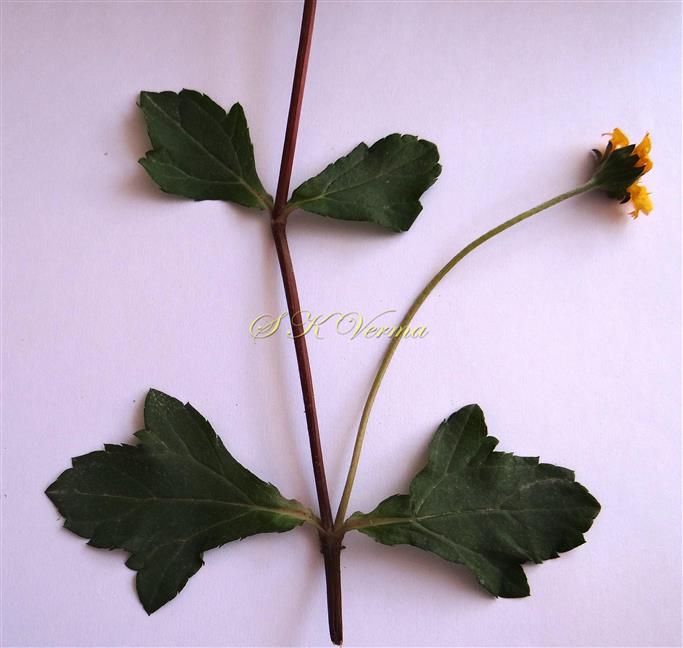
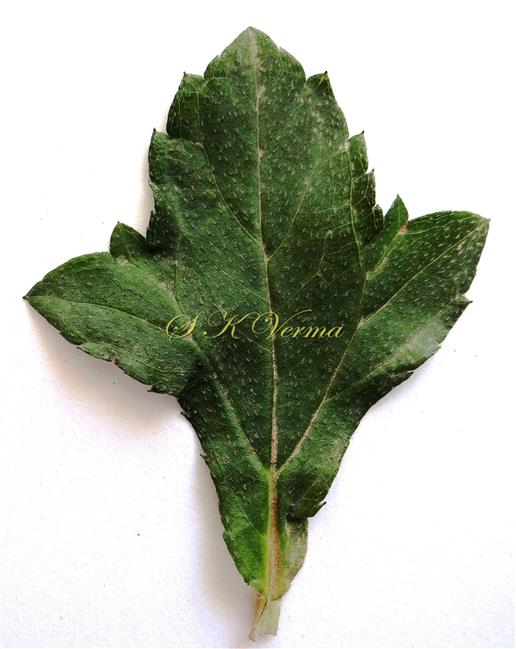
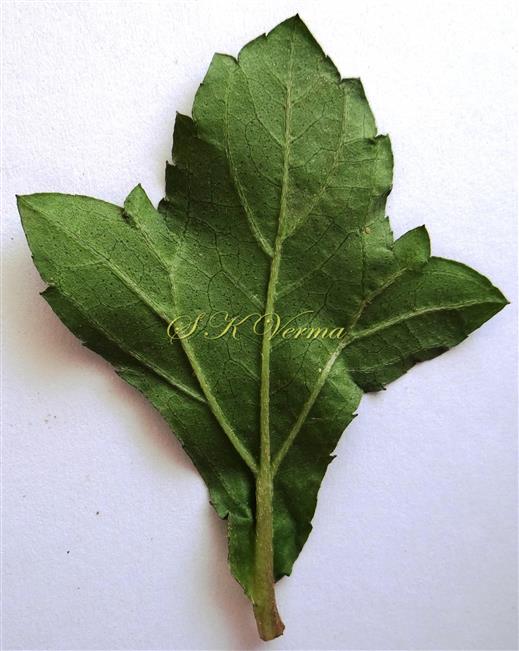
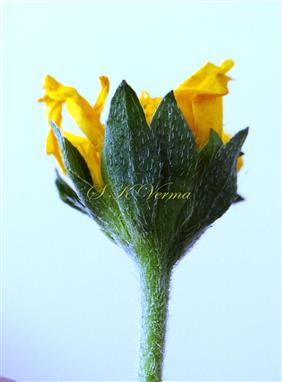
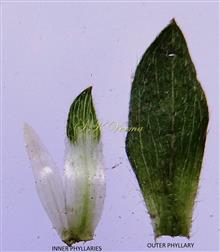

.jpg)
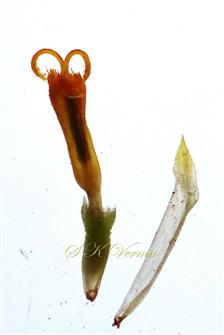









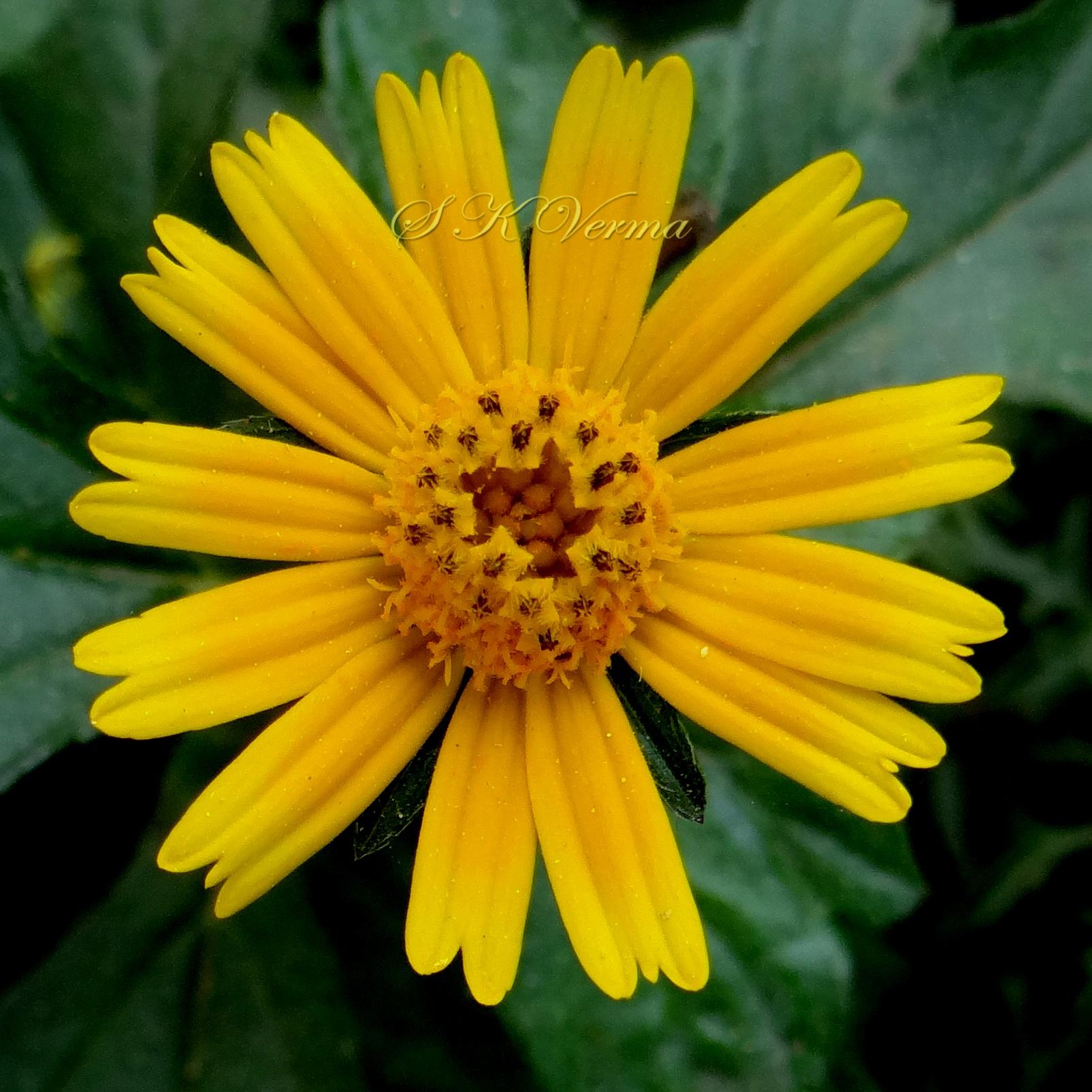
.jpg)
